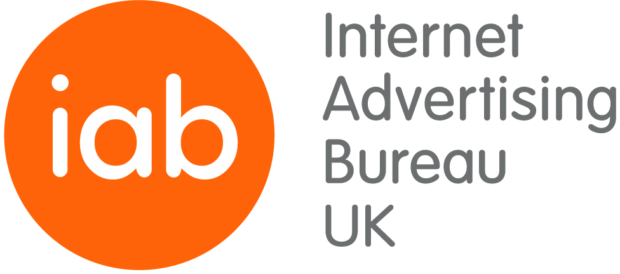Publishers Are Still Struggling to get a Fair Deal in the Programmatic Environment
by Lindsay Rowntree on 21st Nov 2016 in News

At IAB Engage in October, the IAB's Display Trading Council released their latest programmatic handbook, featuring trends and insights from experts across the programmatic industry, providing an update to how the industry has evolved since IAB UK launched the previous handbook in 2014. ExchangeWire are serialising the content, kicking off with an overview of the size of the sell-side market from Gareth Shaw, VP programmatic operations EMEA, Pulsepoint, featuring comment from Rubicon Project, Amobee, and Guardian News & Media.
Prior to programmatic, ad trading was a manual ‘bulk buy’ process, which, by its nature, favoured premium publishers. The shift from bulk buying to programmatic buying changed the focus from publisher content to audience buying. Suddenly, brands no longer needed to seek and buy premium spots on premium publisher sites because they could reach the right user at the right time through smarter, real-time tactics.
While programmatic trading levelled the playing field for publishers – big and small – it also forced many publishers to lower their inventory costs in order to compete. Seven years on, we still see publishers struggling with the same challenge: getting a fair deal in the programmatic environment. However, the benefits of fulfilling a buyer’s requirements, with fewer wasted impressions, means the automated efficiencies of programmatic trading, coupled with the enrichment process that smarter deployment of data brings, are too lucrative to pass up.
The IAB’s Display Trading Council have evaluated the extent to which programmatic trading has captured the UK’s display market on three occasions now: looking back at 2013 and 2014, in partnership with research company MtM, and at 2015, as part of the IAB’s larger UK Ad Spend report commissioned in partnership with PricewaterhouseCoopers (PwC). On each occasion, the sell-side market has been the perspective sought, with each publisher respondent providing their best estimation of what shares of their revenues are being traded programmatically, under the following definition for programmatic:
In 2013, the UK display market was worth £1.86bn, and 28% was being traded programmatically. In 2014, this had grown to £2.42bn and 47%, respectively. As of 2015, our latest figures show that programmatic trading now represents 60% of a £2.68bn market – jumping from a third of all display to nearly two-thirds in a sector undergoing massive investment over the last three years.
Publishers are already embracing the potential of programmatic
“Through the adoption of programmatic technology into their businesses, publishers are given the opportunity to reach a breadth of buyers and, thus, a new pool of spend that their direct sales teams are unable to reach. It simultaneously unlocks the value of publisher audiences, and beyond the revenue opportunities, publishers will realise the cost benefits that automation brings to their businesses.”
James Brown, Managing Director UK & Nordics, Rubicon Project
“Programmatic enables publishers to better monetise their inventory and to match supply with demand. What is making this process so much more effective is when data is effectively applied to the buy. Gone are the days where advertisers are happy to just buy impressions within a particular vertical or demographic. Programmatic has advanced to enable advertisers to buy ads based on very specific criteria, which, in turn, has enhanced programmatic performance.”
Samantha Wade, VP Commercial Partnerships, Amobee
“The key potential of programmatic, from a publisher-side perspective, is around efficiency, as the automation of a media buy unshackles a time-poor sales team from a host of unnecessary administration work. The standard manual IO booking process is removed, and reconciliations/ discrepancies vanish because inventory is transacted in real time. As a publisher makes more of their inventory available to be bought programmatically, a fairer market price evolves, based upon demand, particularly with inventory formerly thought of as remnant.“
Paul Floyer, Investment Manager, Digital and Programmatic, Guardian News & Media
Although the space is not without its potential pitfalls
“Publishers trying to find their way through a fragmented and cluttered tech landscape need to tread carefully. In the current environment, working with the right partner is crucial to ensure that they can thrive in the digital space. Understanding the value of premium publishers' audiences and data segments within the marketplace is imperative, as is keeping up with the consumer and their rapidly changing behaviours. It can take as little as a few months to fall behind the competition.”
James Brown, Managing Director UK & Nordics, Rubicon Project
“Programmatic offers a multitude of opportunities for publishers. However, after investigation, there are some key issues that become apparent: a dilution of transparency, a lack of control and the possibility of data leakage. Dilution of transparency and lack of control occur due to the issues around arbitrage, a seller has minimal control over what a buyer does with inventory after purchase – are they reselling it, are they giving a fair representation of where it ends up? Second to this is data leakage. Sellers in a programmatic ecosystem can only be reactive to data theft, there is no real-time technology that can block buyers who are piggy-backing a publisher’s audience for their own use.”
Andrew Hayward-Wright, Programmatic Solutions Manager, Guardian News & Media








Follow ExchangeWire